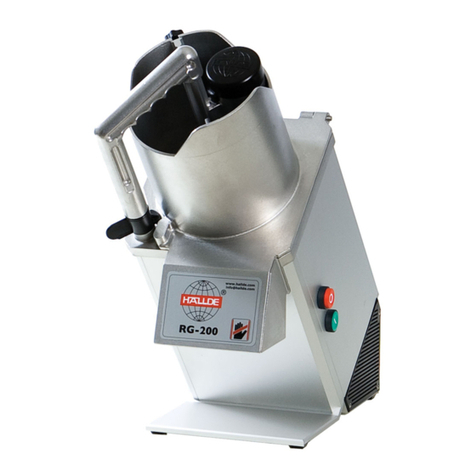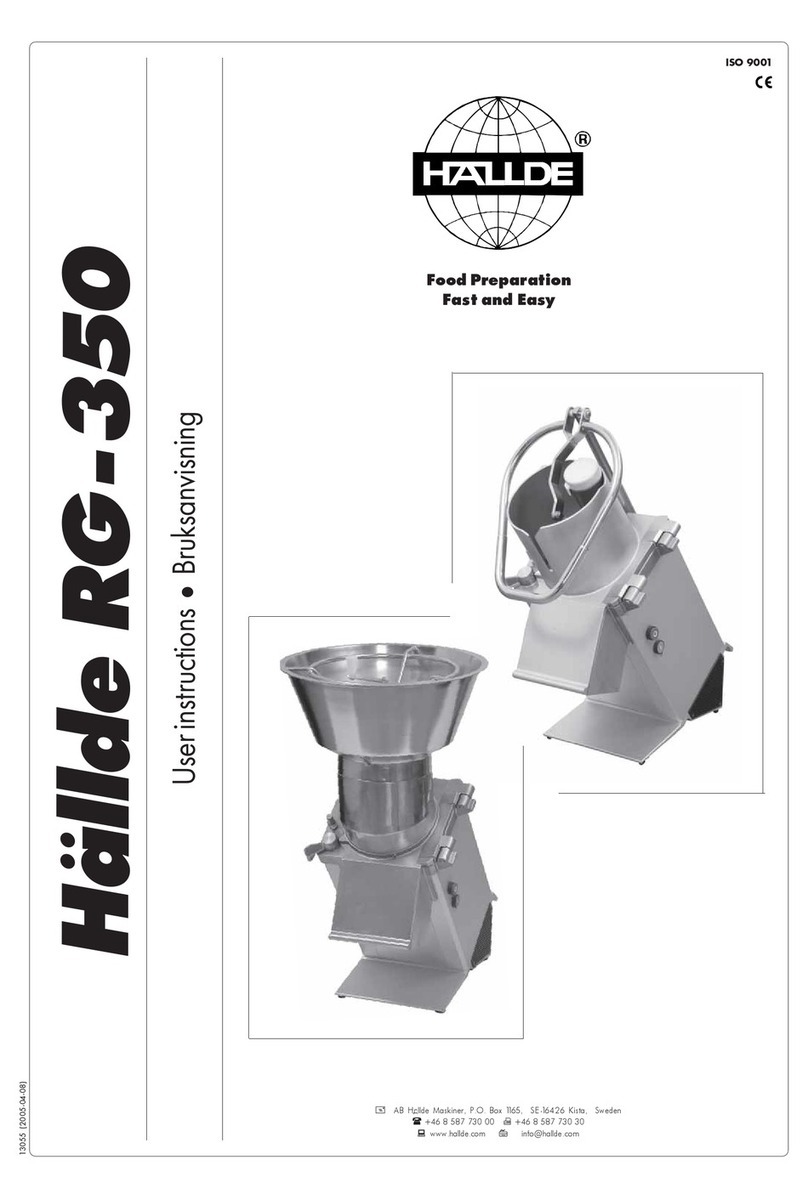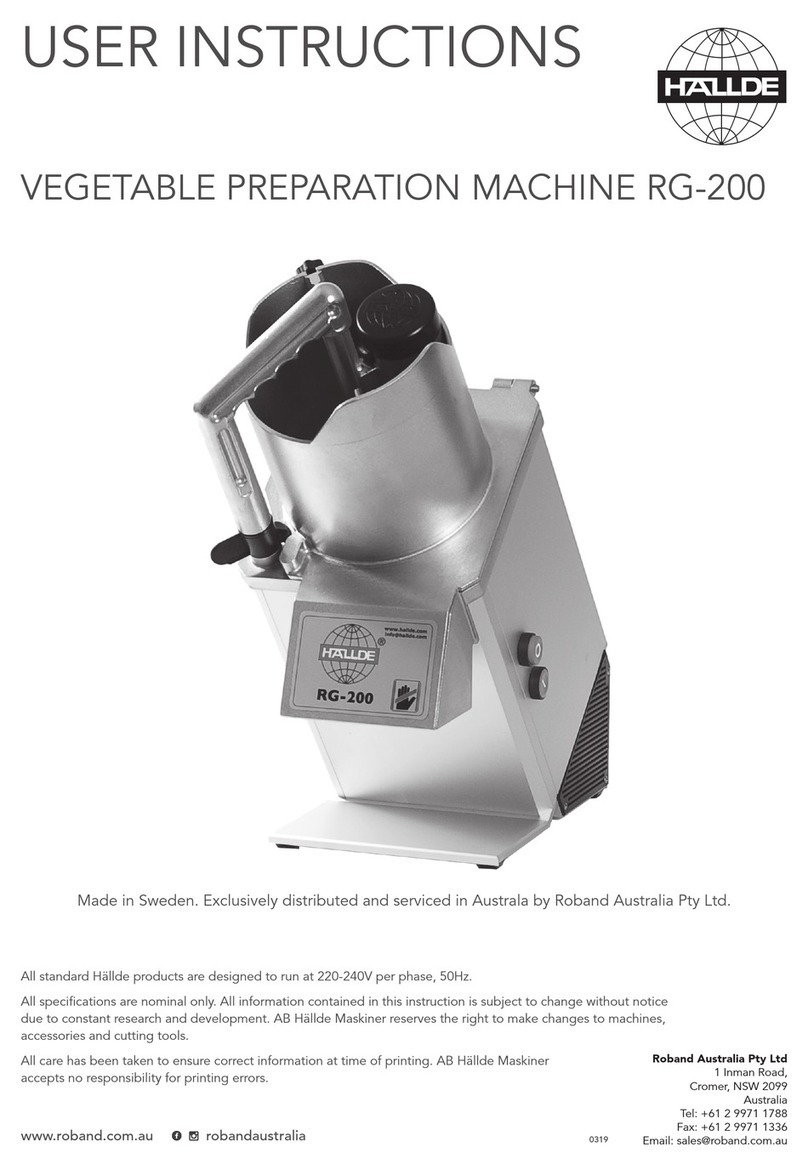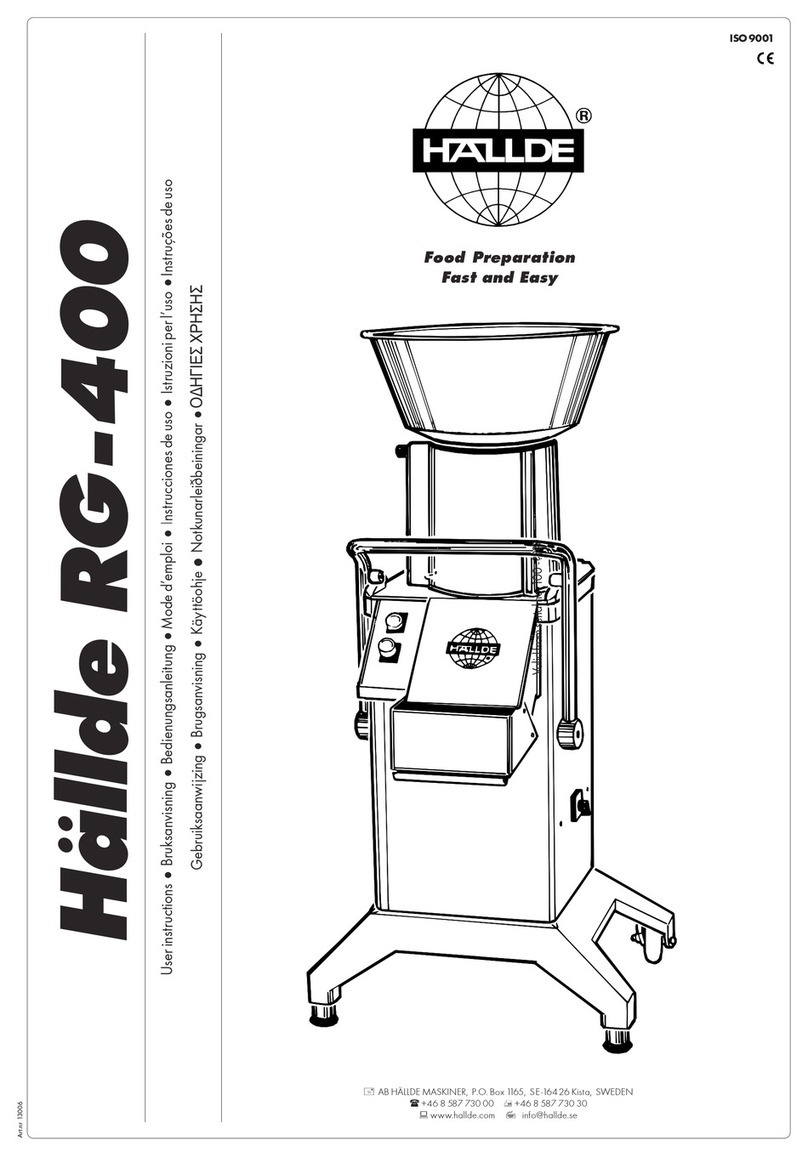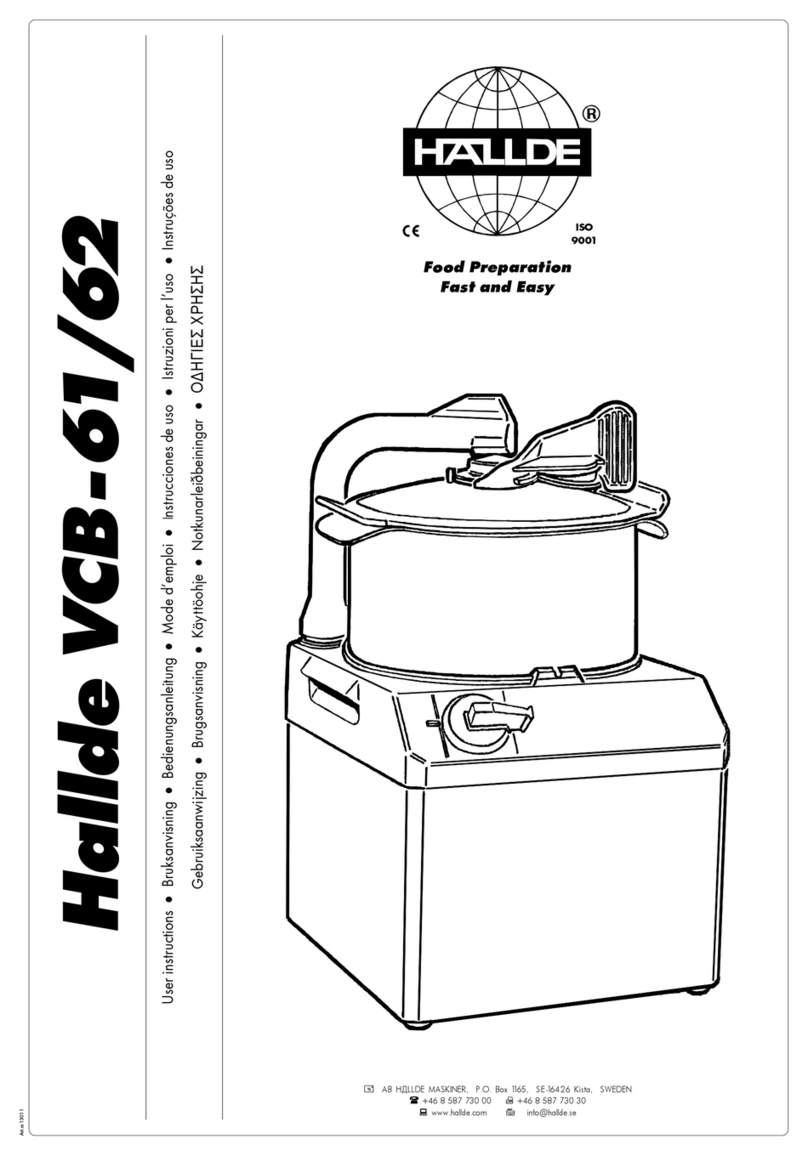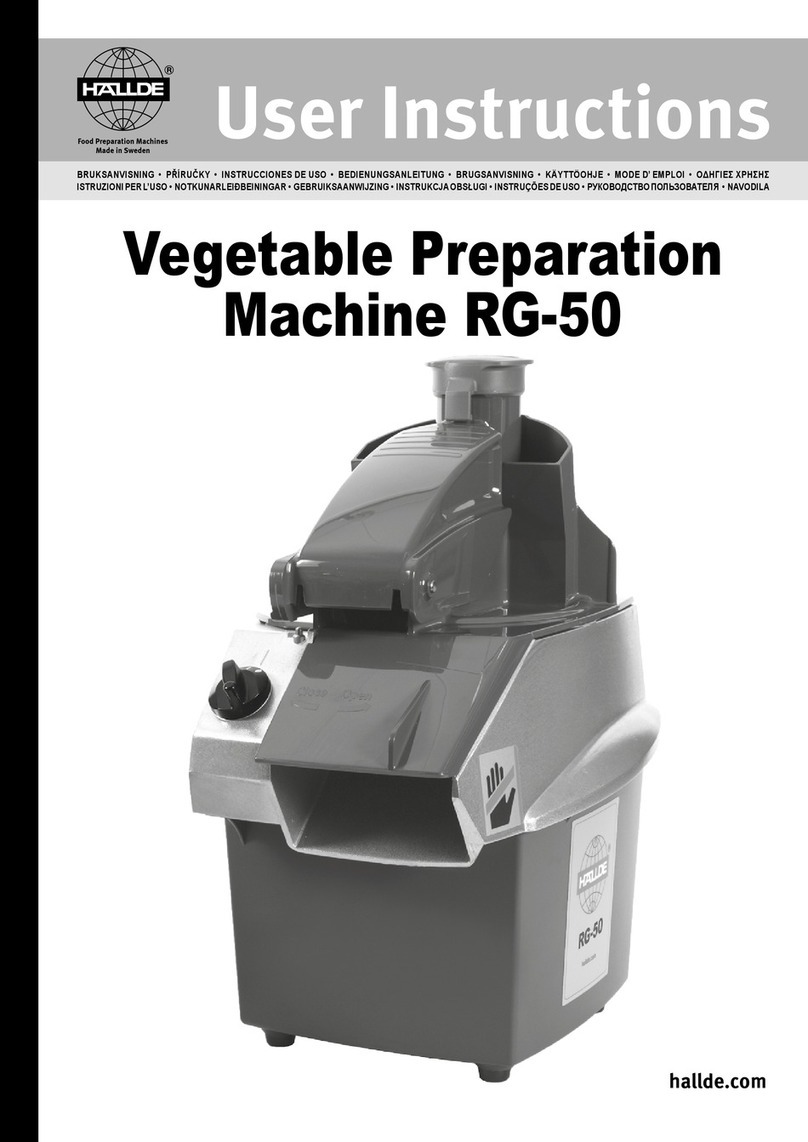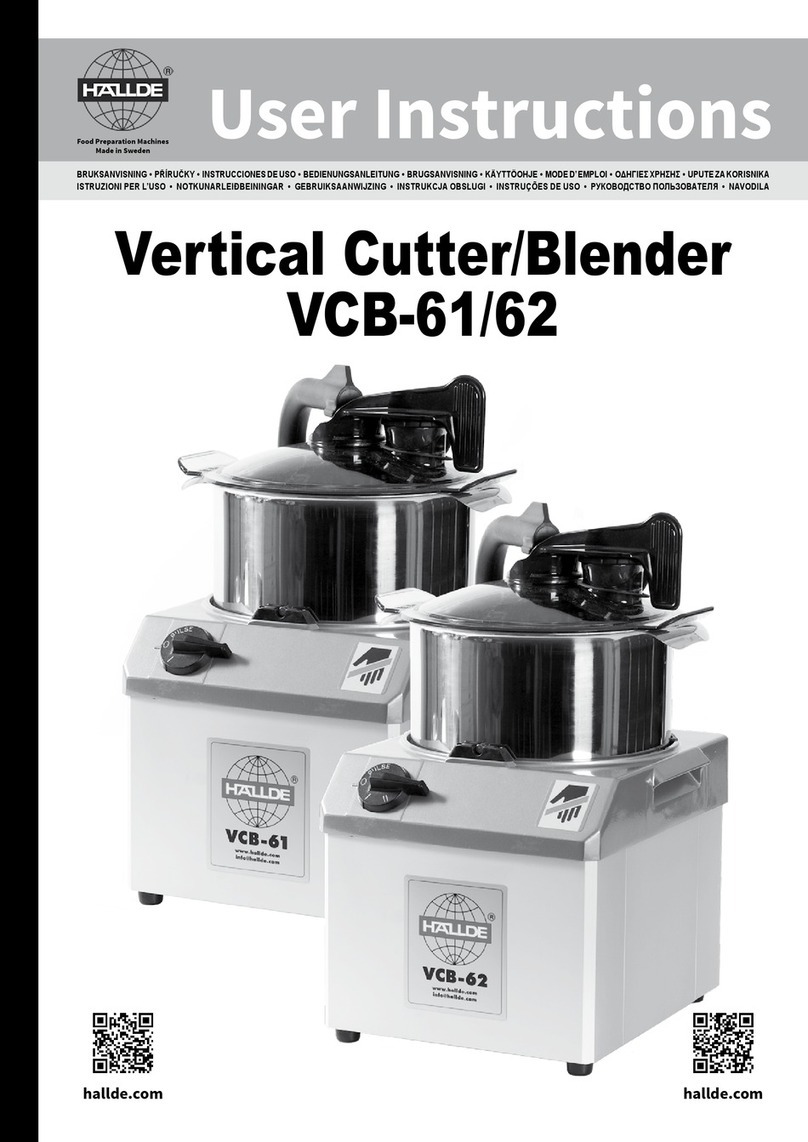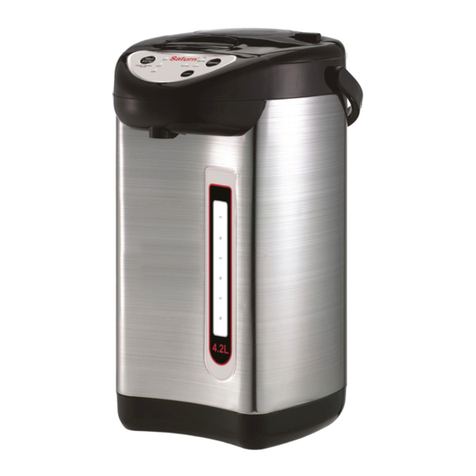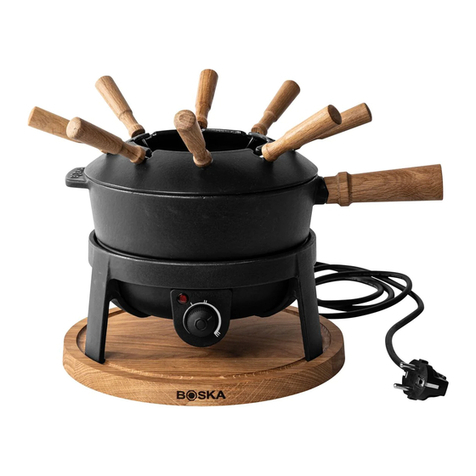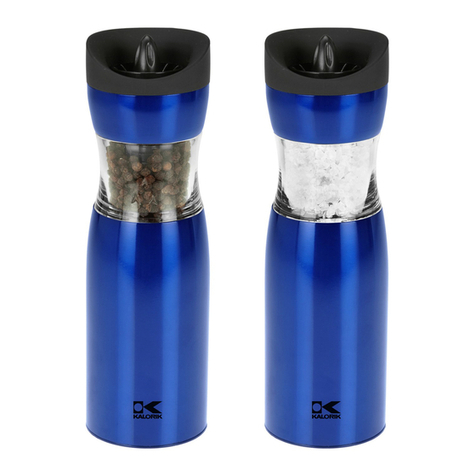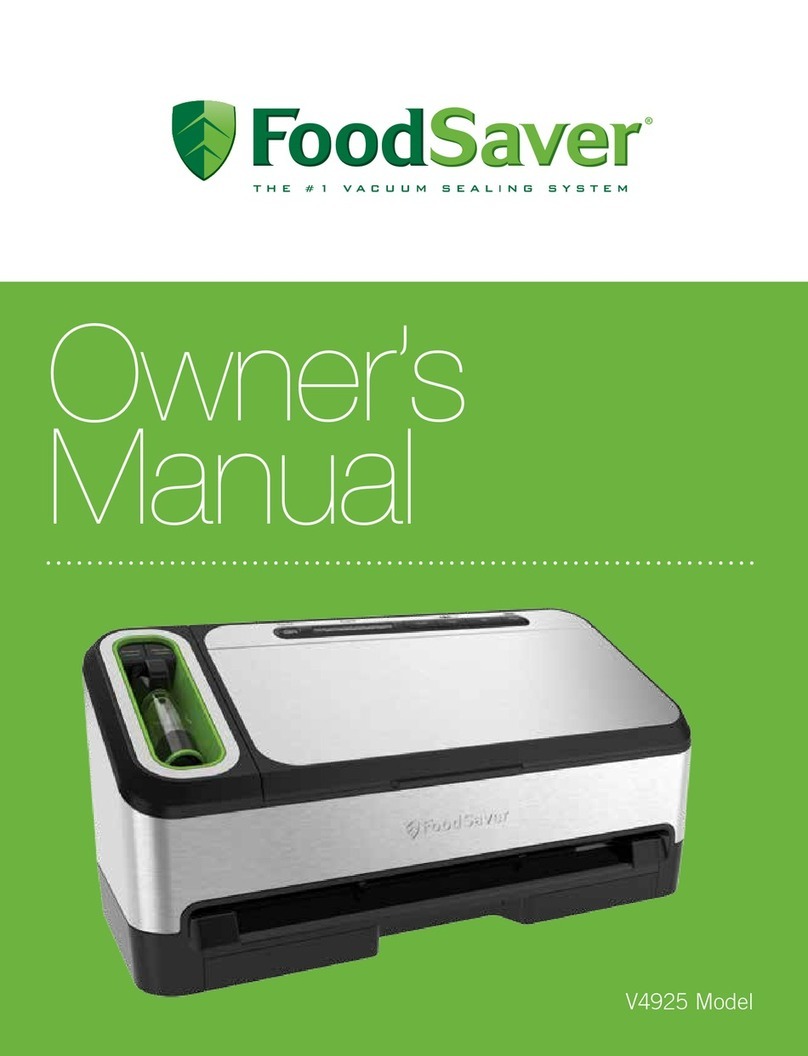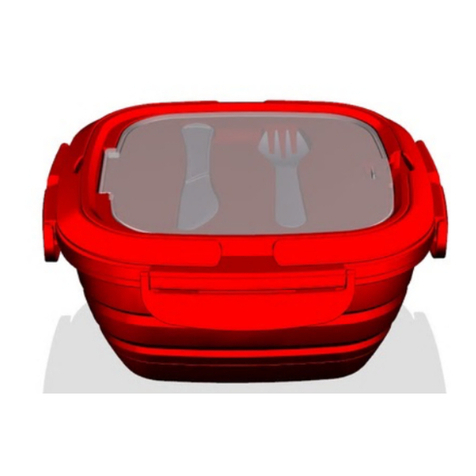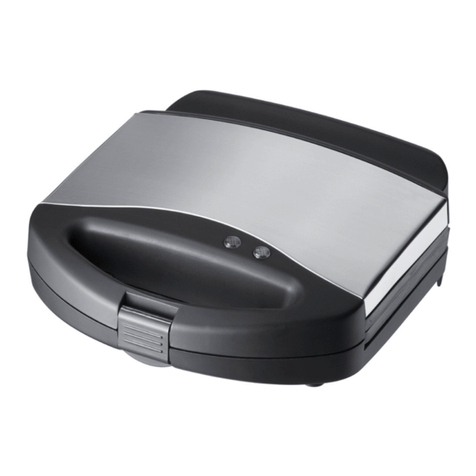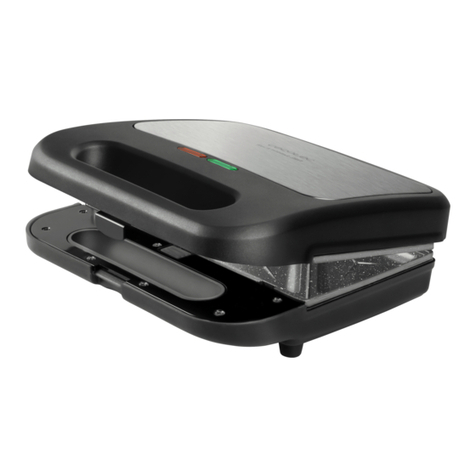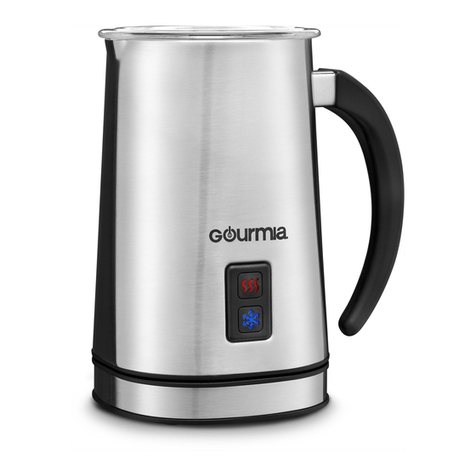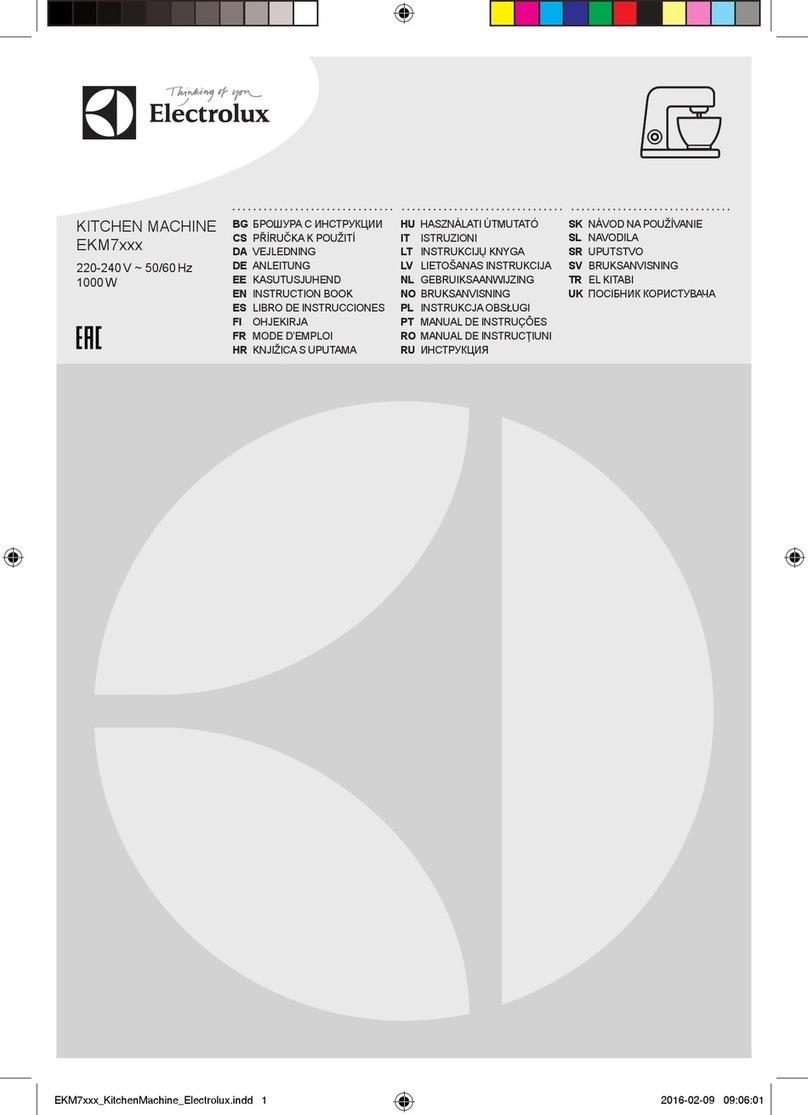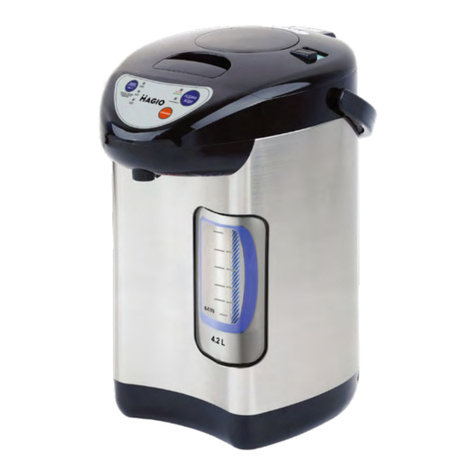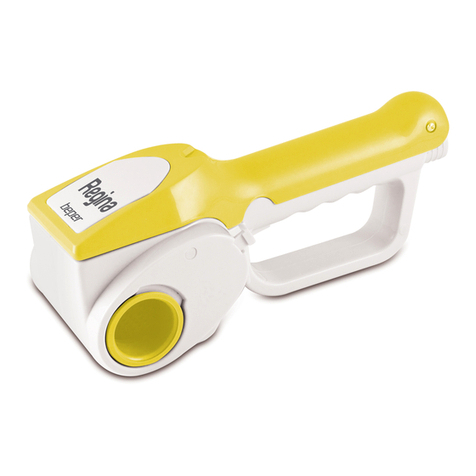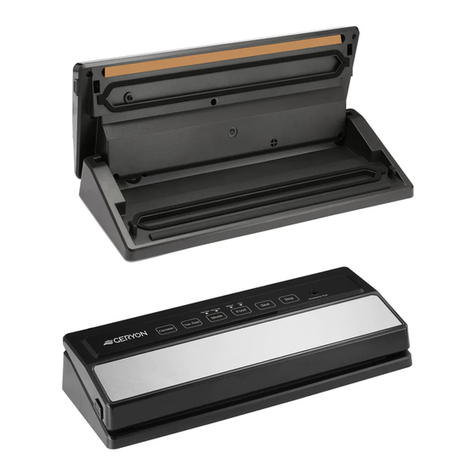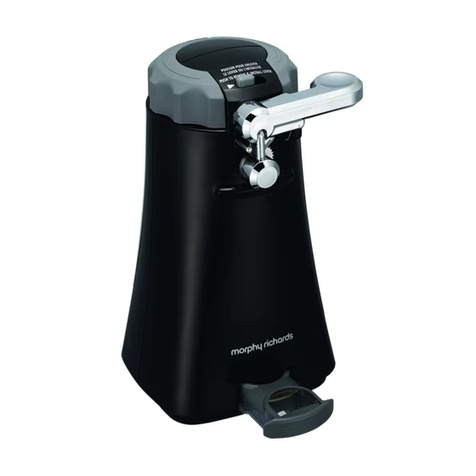
Vegetable preparation machine
RG-50S/ RG-50
Combi Cutter
CC-32S/ CC-34
Cutting Tools Vertical Cutter Blender
VCB-32
Nemco • User InstructionsNemcoFoodEquip.com10
les instructions du chapitre « Démontage »,
puis vérier que la machine ne démarre pas
lorsque le sélecteur de vitesse est mis dans
la position “I”.
Mettre en place le coupe-légumes, en suivant
les instructions du chapitre « Montage ». Mettre
le sélecteur de vitesse en position « I ». Vérier
que l’appareil s’arrête, lorsque la poignée du
coupe-légumes est repoussée vers le haut
et s’assurer que l’axe cesse de tourner dans
les 2 secondes. Puis s’assurer que l’appareil
redémarre dès que l’on rabat la poignée.
Vérifier que les pieds en caoutchouc de
l’appareil sont bien vissés.
En ce qui concerne les accessoires tranchants,
cf. pages 26-28.
En cas de défaut ou de mauvais fonctionnement,
faire appel à un professionnel qualifié qui
réparera l’appareil avant toute remise en
service.
TYPES DE PRÉPARATION
L’appareil sert à couper en tranches, en
dés, en lamelles, en julienne et en tranches
gaufrées de différentes dimensions et à râper,
en fonction de l’accessoire tranchant choisi.
Il prépare les légumes, les fruits, le pain sec, le
fromage, les noisettes, les champignons, etc.
UTILISATEURS
Restaurants, traiteurs, cafés, boulangeries-
pâtisseries, cuisines diététiques, maisons de
retraite, écoles, restauration rapide, centres
d’accueil, saladeries, etc.
CAPACITÉ
Jusqu’à 80 portions par jour et 2 kg par minute.
UTILISATION
DU COUPE-LÉGUMES
Utiliser la grande chambre d’alimentation pour
charger en continu toutes sortes de produits et
pour couper de gros produits comme le chou.
Utiliser également la grande chambre
d’alimentation pour couper dans un sens
déterminé, par exemple des tomates et des
citrons. Placer/empiler les produits selon le
schéma.
La goulotte d’alimentation intégrée sert pour
la découpe de produits longs comme le
concombre ; cf. schéma.
MONTAGE
Placer le plateau répartiteur sur l’axe et
appuyer en tournant pour l’encliqueter.
Ensuite placer l’accessoire tranchant choisi
sur l’arbre et le tourner jusqu’à encliquetage.
Pour couper en dés: Placer la grille à macédoine
avec l’arête tranchante des lames vers le haut,
de manière que l’ergot de guidage dont est
muni le bloc moteur pénètre dans la rainure
située sur le côté de la grille. Ensuite placer le
trancheur et le tourner jusqu’à encliquetage.
Placer le coupe-légumes sur le bloc moteur
de telle sorte que l’inscription « Close Open »
soit dans la position « 5 heures » par rapport
à l’orice de sortie du bloc moteur et puis le
tourner dans le sens des aiguilles d’une montre
jusqu’à blocage.
DÉMONTAGE
Tourner le coupe-légumes dans le sens des
aiguilles d’une montre jusqu’en butée et
l’enlever.
Tourner l’accessoire tranchant dans le sens
des aiguilles d’une montre et l’enlever.
Si la grille à macédoine a été utilisée, l’enlever.
Enlever le plateau répartiteur.
UTILISATION DU RÉGLAGE
DE LA VITESSE
Lorsque le sélecteur de vitesse est dans la
position « O », l’appareil est arrêté. Dans la
position « I », il fonctionne de manière continue.
NETTOYAGE
Avant de commencer à nettoyer l’appareil, lire
toutes les instructions.
AVANT DE NETTOYER: Toujours arrêter
d’abord l’appareil et débrancher la prise
murale. A défaut d’une che, couper le courant
à l’aide de l’interrupteur de service. Retirer
toutes les pièces amovibles qui doivent être
nettoyées.
NETTOYAGE DANS LE LAVE-VAISSELLE:
Toutes les pièces amovibles peuvent être
lavées dans le lave-vaisselle.
NETTOYAGE À LA MAIN: Utiliser toujours un
détergent pour vaisselle à la main.
MATÉRIAUX DE NETTOYAGE : Pour nettoyer
les zones exposées aux aliments, utiliser une
éponge à récurer la vaisselle. L’axe au milieu
de l’appareil peut être nettoyé à l’aide d’une
petite brosse à bouteilles. Pour essuyer les
autres surfaces de l’appareil, utiliser un chiffon
humide.
DÉSINFECTION: Utiliser l’alcool isopropylique
(de 65 à 70 %). L’alcool isopropylique est très
inammable ; lors de son application, il faut
donc être prudent.
ATTENTION !
• Ne pas verser ou asperger d’eau sur les
côtés de l’appareil.
• Ne pas utiliser d’eau bouillante ou chaude.
• Ne pas utiliser l’hypochlorite de sodium ou
d’autres produits contenant cette substance.
• Ne pas utiliser d’objets tranchants pour
nettoyer l’appareil ou d’autres objets qui ne
sont pas destinés au nettoyage.
• Ne pas utiliser de détergents ou de produits
de nettoyage abrasifs.
À ÉVITER Ne pas utiliser d’éponges à récurer
avec une toison abrasive (par exemple
Scotch-Brite™), si cela n’est pas absolument
nécessaire. Cela rend la surface plus rude et
moins hydrofuge.
CONSEIL D’ENTRETIEN:
• Nettoyer l’appareil immédiatement après
l’utilisation.
• Essuyer l’appareil immédiatement après
le nettoyage an d’éviter l’oxydation et la
décoloration du surface.
INFORMATION: Si vous laissez cet appareil
humide pendant des périodes plus longues,
des taches apparaîtront. Ces taches sont
inoffensives mais le surface originaire perdra
son lustre. Les légumes et les fruits contiennent
des acides. En fonction des aliments préparés,
cela exerce un effet sur le métal au bout
d’une période dont la durée varie. Il est donc
important de nettoyer l’appareil immédiatement
après la préparation d’aliments salés et acides.
DÉPANNAGE
Pour éliminer les risques de dommages
au niveau du moteur, le modèle RG-50
intègre une fonction de sécurité qui l’arrête
automatiquement en cas d’échauffement. Le
réenclenchement est ensuite automatique,
ce qui signie donc qu’il n’est pas possible de
redémarrer l’appareil avant que le moteur ait
refroidi, ce qui demande normalement entre
10 et 30 minutes.
DÉFAUT: L’appareil ne démarre pas ou
s’arrête en cours de fonctionnement et refuse
de redémarrer.
MESURES: S’assurer que la fiche est
branchée sur la prise murale ou, selon le
cas, que l’interrupteur général est sur « I ».
Vérifier que les fusibles dans l’armoire à
fusibles du local sont intacts et ont l’ampérage
qui convient. Vérier que le coupe-légumes
est correctement monté et que la poignée du
coupe-légumes est rabattue. Attendre jusqu’à
30 minutes avant d’essayer de remettre
l’appareil en marche. Le cas échéant, faire
appel à un professionnel compétent.
DÉFAUT: faible capacité ou mauvais résultats
MESURES: Choisir l’accessoire tranchant
approprié. Utiliser impérativement le plateau
répartiteur. S’assurer que les couteaux et les
accessoires tranchants sont intacts et bien
coupants. Exercer une pression plus légère
sur le produit à traiter.
DÉFAUT: Il n’est pas possible d’enlever
l’accessoire tranchant.
MESURES: Utiliser impérativement le plateau
répartiteur. Utiliser un gant épais, que les
arêtes tranchantes de l’accessoire tranchant
ne risquent pas de traverser, et libérer
l’accessoire en le tournant dans le sens des
aiguilles d’une montre.
CARACTÉRISTIQUES
TECHNIQUES NEMCO RG-50
QUANTITÉS ET VOLUMES: Jusqu’à 2 kg
par minute. Contenance de la chambre
d’alimentation: 0,9 litre. Diamètre de la goulotte
d’alimentation: 53 mm.
BLOC MOTEUR: Moteur: 1,0 W. 120 V,
monophasé, 60 à Hz. 220 à 240 V, monophasé,
50 à 60 Hz. Protection thermique du moteur.
Transmission par courroie crantée ne
nécessitant pas d’entretien. Système de
sécurité: deux disjoncteurs de sécurité. Classe
d’isolation: IP34. Branchement secteur: prise
murale avec terre, alimentation monophasée,
10 A. Fusible dans l’armoire à fusibles du
local: 10 A, à action différée. Niveau sonore:
LpA (EN31201): 76 dBA. Champ magnétique:
inférieur à 15 microtesla. Vitesse: une vitesse.
Env. 500 tr/min.
ACCESSOIRES TRANCHANTS: Diamètre des
accessoires tranchants: 185 mm.
POIDS NETS: Bloc moteur: 8,6 kg. Dispositif
d’alimentation: 1 kg. Accessoires tranchants:
env. 0,3 kg en moyenne.
NORMES: NORME NSF 8, cf. déclaration de
la conformité.

